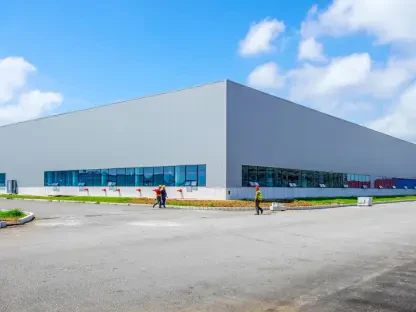Imagine a retail giant scrambling to meet holiday demand, only to discover half its stock is misplaced across multiple warehouses while critical items are out of stock, highlighting a persistent challenge in business operations: maintaining control over inventory. In an era where efficiency dictates profitability, inventory management software has emerged as a pivotal solution to streamline stock control, reduce errors, and enhance decision-making. This review dives deep into the capabilities of these digital tools, exploring their key features, real-world impact, and the evolving trends shaping their development. The aim is to provide a clear perspective on how this technology transforms operations across industries.
Core Concepts and Evolution of Inventory Management Software
At its essence, inventory management software is a digital framework designed to oversee stock levels, track product movement, and optimize supply chain processes. Unlike manual methods that relied on spreadsheets and physical counts, modern systems integrate automation and data analytics to deliver precision and speed. This shift from labor-intensive tracking to sophisticated platforms reflects the growing need for agility in business environments where delays can cost millions.
The relevance of these tools cannot be overstated in a landscape dominated by e-commerce and just-in-time delivery models. Businesses now face pressure to balance lean inventories with customer expectations for instant availability. Inventory management software addresses this by providing a centralized system to monitor stock across locations, ensuring neither overstock nor shortages disrupt operations. Its evolution continues to align with the demands of a fast-paced market, making it indispensable for competitive enterprises.
Key Features Driving Performance
Automation and Reorder Notifications
A standout feature of inventory management software is automation, particularly through reorder notifications. These alerts trigger when stock dips below a set threshold, prompting immediate action to replenish supplies. By automating purchase order generation, the software eliminates manual oversight, slashing the risk of human error and ensuring critical items are restocked without delay.
This functionality proves vital for businesses managing high-turnover products. Automated systems not only save time but also prevent costly stockouts that could alienate customers. The seamless nature of these alerts integrates with broader supply chain workflows, creating a responsive mechanism that keeps operations running smoothly even during peak demand periods.
Real-Time Stock Tracking and Visibility
Equally critical is the ability to track inventory in real time through dynamic dashboards. These interfaces provide instant updates on stock levels, sales trends, and order statuses, offering a clear snapshot of inventory health at any moment. Such visibility empowers managers to make swift decisions, whether reallocating stock or addressing sudden spikes in demand.
Real-time tracking tackles the perennial issue of stock imbalances. With data accessible across multiple locations or channels, businesses can avoid overstocking in one warehouse while facing shortages in another. This feature fosters a proactive approach, ensuring resources are allocated efficiently and customer needs are met without interruption.
Advanced Data Analytics and Reporting
Data analytics forms another cornerstone, with reporting tools that dissect inventory trends and performance metrics. Standard reports might cover stock turnover rates, while customizable options allow deeper analysis of specific SKUs or seasonal patterns. These insights help businesses understand what moves quickly and what lingers, refining inventory strategies.
The power of analytics extends to demand forecasting, a game-changer for planning. By leveraging historical data, the software predicts future needs, enabling precise stock adjustments. This capability minimizes waste, optimizes storage costs, and ensures capital isn’t tied up in unsold goods, directly impacting the bottom line.
Emerging Trends in Inventory Management Technology
The landscape of inventory management software is undergoing rapid transformation, driven by cloud-based solutions that offer scalability and remote access. These platforms allow businesses to manage stock from anywhere, breaking free from the constraints of on-site systems. User-friendly interfaces further enhance adoption, catering to non-technical staff with intuitive designs.
Another notable trend is the integration of artificial intelligence for predictive analytics. AI-driven tools analyze vast datasets to anticipate market shifts, refining inventory forecasts with unprecedented accuracy. Coupled with mobile access, which supports on-the-go updates, these innovations reflect a broader push toward flexibility and data-driven precision in stock control.
Consumer demand for seamless operations also shapes software development. As expectations for rapid delivery grow, vendors are prioritizing integrations with e-commerce platforms and logistics systems. This convergence ensures a unified approach to inventory across online and offline channels, positioning businesses to meet modern retail challenges head-on.
Practical Applications Across Industries
In retail, inventory management software synchronizes stock across physical stores and online marketplaces, preventing overselling and ensuring product availability. Large chains use these tools to manage thousands of SKUs, aligning inventory with regional demand patterns. Such coordination is crucial during sales events when stock turnover skyrockets.
Manufacturing sectors rely on these systems to track raw materials and finished goods across sprawling supply chains. Real-time data helps schedule production runs, avoiding bottlenecks caused by missing components. Meanwhile, unique implementations like barcoding enhance accuracy in high-volume environments, reducing errors during stock intake or dispatch.
E-commerce businesses benefit from mobile systems that enable field updates, especially for fulfillment teams managing multiple warehouses. These tools ensure inventory data remains current, even as orders pour in from diverse channels. The ability to adapt to fluctuating online demand through integrated software underscores its versatility across operational contexts.
Adoption Challenges and Limitations
Despite its advantages, implementing inventory management software comes with hurdles, starting with initial setup costs. Licensing fees, hardware upgrades, and customization can strain budgets, particularly for small enterprises. These financial barriers often delay adoption, even when long-term savings are evident.
Staff training presents another obstacle, as employees must adapt to new workflows and interfaces. Resistance to change or inadequate support can hinder effective use, diminishing the software’s potential. Compatibility issues with legacy systems further complicate integration, requiring additional resources to bridge technological gaps.
Market and regulatory challenges also play a role, especially for industries with strict compliance standards. Ensuring software meets data security or reporting requirements adds complexity to deployment. However, developers are actively addressing these issues by designing scalable, accessible solutions that cater to diverse business needs and regulatory frameworks.
Future Trajectory of Inventory Management Tools
Looking ahead, deeper AI integration promises to revolutionize inventory forecasting, with algorithms learning from complex market dynamics to offer near-flawless predictions. Such advancements could redefine how businesses plan stock, minimizing waste and maximizing efficiency. The focus on smarter systems signals a shift toward preemptive rather than reactive management.
Enhanced mobile capabilities are also on the horizon, enabling even greater flexibility for distributed teams. Imagine warehouse staff updating stock via handheld devices in real time, seamlessly syncing data across global networks. This mobility will likely become standard, catering to the growing prevalence of remote and hybrid operational models.
Broader system interoperability stands as another key development, with software expected to integrate effortlessly with accounting, CRM, and logistics platforms. Over the next few years, from now to 2027, this convergence could create a fully connected ecosystem, where inventory data informs every business decision. The long-term impact on operational efficiency and customer satisfaction across sectors appears profound.
Final Verdict and Next Steps
Reflecting on this evaluation, inventory management software proves to be a transformative force, delivering automation, visibility, and analytical depth to businesses navigating complex supply chains. Its capacity to streamline operations and curb inefficiencies stands out as a defining strength, even as adoption challenges persist. The technology’s evolution mirrors the urgent need for precision in a competitive market.
Moving forward, businesses should prioritize scalable solutions that align with their operational scale and long-term goals. Investing in staff training emerges as a critical step to maximize software benefits, ensuring smooth transitions. Exploring cloud-based options could also mitigate upfront costs, offering a flexible entry point for smaller firms.
Finally, staying attuned to AI-driven innovations and integration capabilities is deemed essential for future-proofing operations. Companies that embrace these advancements position themselves to not only solve current stock control issues but also anticipate market shifts. This proactive stance promises sustained growth and resilience in an ever-evolving business landscape.









